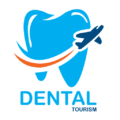Subtotal $0.00
- Home
- About Us
- Services
- LASER DENTISTRY
- DIGITAL SMILE DESIGNING
- TOOTH WHITENING
- SPEED DENTISTRY
- Intra Mouth Dental Scanning
- INVISIBLE ORTHODONTICS
- IMPLANTS
- GUM GRAFTING/ GUMS TREATMENT
- CHILD DENTISTRY & PREVENTIVE CARE
- SENIOR CITIZEN CARE
- DENTAL CARE FOR PATIENTS WITH MEDICAL CONDITIONS
- MAXILLARY SURGERY
- DENTAL BRIDGES, PORCELAIN/CERAMIC CROWNS
- Bleaching
- Vertical and Horizontal Bone Grafting
- PALATAL ORTHODONTICS
- FLUORIDE TREATMENTS FOR CHILDREN
- ROOT CANAL
- Teeth Whitening
- TOOTH CONTOURING AND RESHAPING
- DENTAL FILLINGS
- DIGITAL X-RAYS
- DENTAL TOURISM
- Blog
- Contact
Shopping cart
- Phone: +163-654-3569
- Email: info@dentaltourism-india.com

